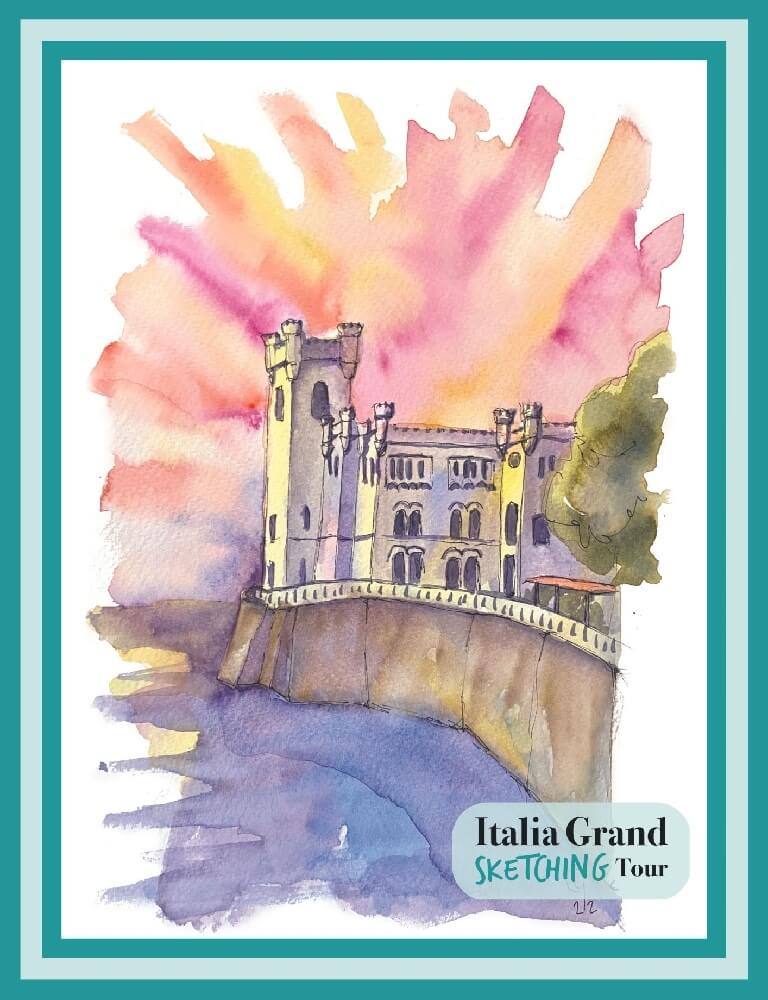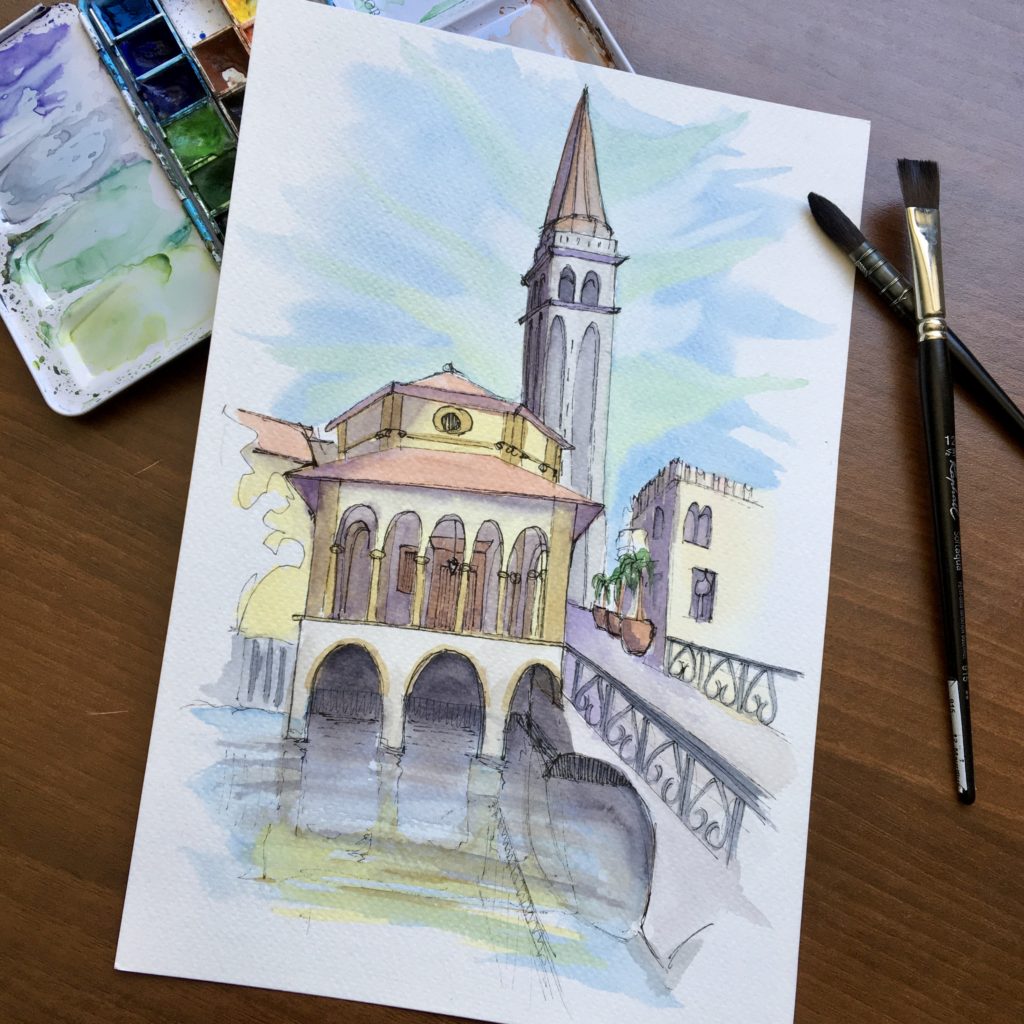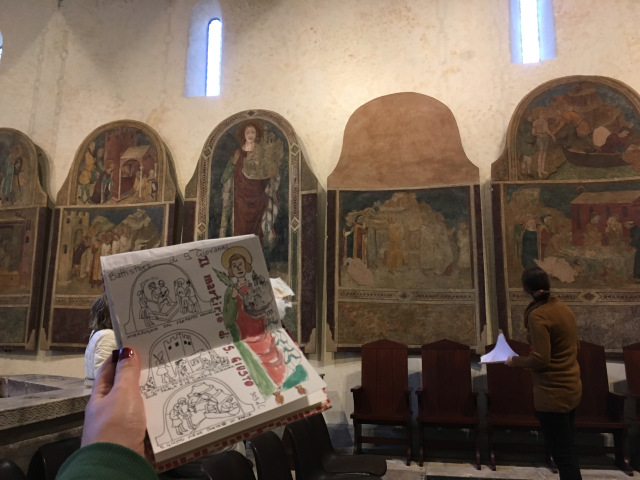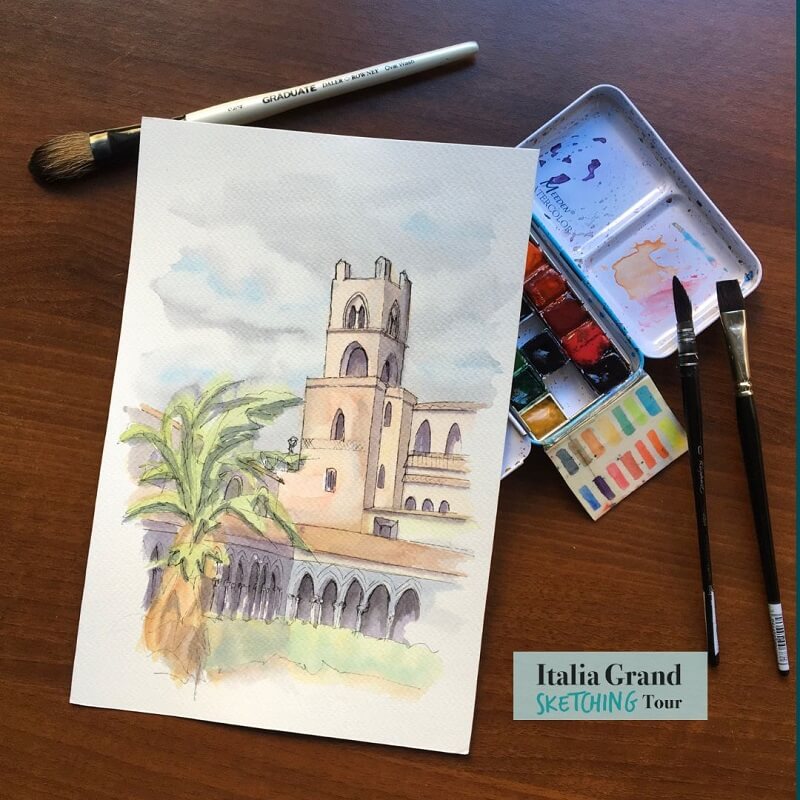Places to see and remember in Trieste
Trieste is a city on the border and this creates unique characteristics to be discovered. A little Italian, a little Austrian, a little Balkan, visiting Trieste offers a mix of architectures and flavors that can be explored through the discovery of the places, the cuisine and the knowledge of the true Trieste people (in dialect “patochi”). A paasing by city for those going to Slovenia and Croatia, that in recent years became a tourist destination thanks to its magnificent views and its culture.
Trieste is a city with a clear sky when the wind of bora blows, with breathtaking sunsets over the sea and a timeless and placeless beauty, or perhaps of all places. I love my city but sometimes it’s too small for me. I leave it to immerse myself in other places but I always end up returning to my roots in this land of wind, sailors and travellers, cultural melting pot and delicious coffee. But let’s start with the visit.
In this list you will find the places that, in my opinion, are worthy a visit in Trieste. For some I’ll share with you the color they imprinted on me during the making of an exclusive series of watercolors. If you like them, at the bottom of the article you can request the Trieste 2023 Calendar that I have prepared for you!
1. Miramare Castle
The tour of Trieste can start from one of its most spectacular views: the white towers of the castle on the sea. It was built in the mid-1800s as the residence of Maximilian of Habsburg-Lorraine, archduke of Austria and then emperor of Mexico, and of his wife Charlotte of Belgium. The castle is surrounded by a luxuriant park where the emperor planted species from all over the world and which can still be seen.
The white towers of the Castle of Miramare stand out against the stretch of water thus becoming visible from almost the entire Gulf of Trieste. It is a landscape that I could paint continuously because it offers a thousand glimpses and a thousand changes of colour.
In this case I was inspired by a photo at sunset, in which white turns into a thousand shades of pink and orange and the sea darkens as the minutes go by.
2. Arco di Riccardo
You come across this arch by getting lost up the hill in the narrow streets of the old Roman and medieval core of the city. It is thought to be one of the Roman gates of Trieste dating back to the 1st century BC. It is a central arch decorated by pilasters with Corinthian capitals and surmounted by an upper crowning without decorations. One of its peculiarities is that it has been incorporated into the buildings that have been erected in the area over the centuries, becoming one with them.
Riccardo’s Arch has numerous cracks which make it an extremely interesting but difficult subject to draw. Precisely, thanks to the attention needed to paint it, I was able to notice the small and large details that makes it truly unique.
3. Trieste Public Garden
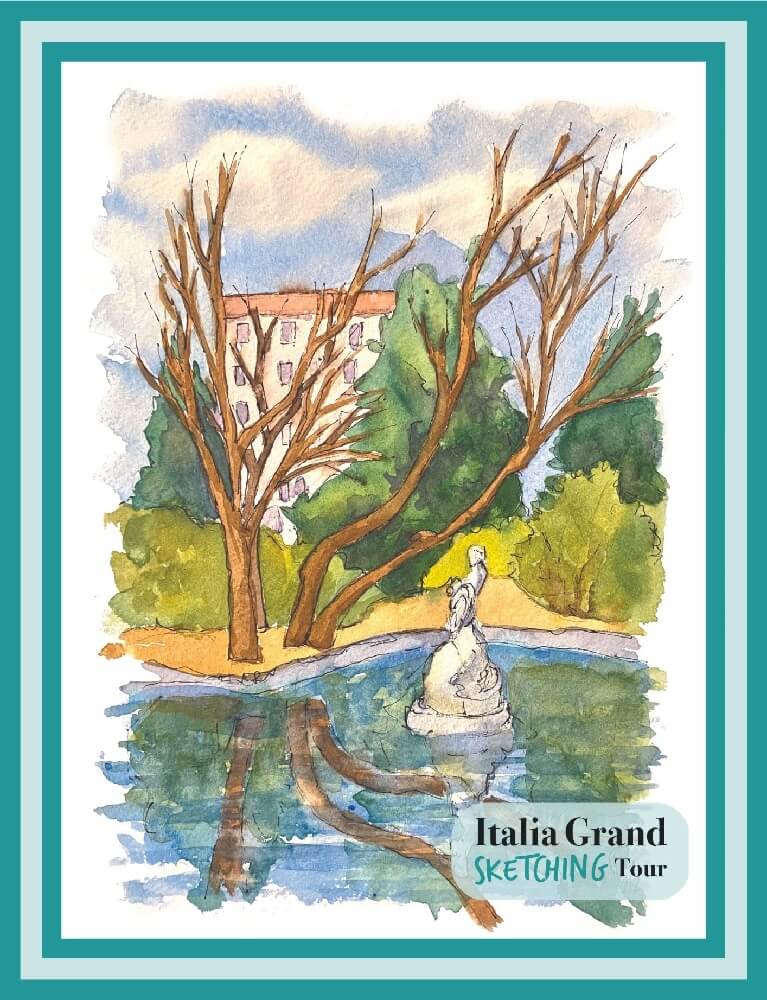
One of the green hearts of Trieste is the Muzio de’ Tommasini Garden (locally abbreviated to Public Garden). It was opened in 1864 on land that belonged to the Benedictine nuns. It was designed by Tommasini himself, a politician and botanist from Trieste.
This park is frequented mostly by citizens and here you can breathe Trieste. At lunchtime it fills up with people eating outdoors and enjoying the warmth of the sun. This park is loved for its pond and for the swans that live here, swimming placidly oblivious to the chaos that surrounds them. In the center of the pond is a statue of a little girl who embraces a swan, which has been the subject of my painting.
4. Historical Fish Market of Trieste
Walking along the banks, near Piazza Unità, you reach the building of the historical Fish Market of Trieste, built in 1913. The imposing palace was erected with a structure resembling a church to create a continuum with the neoclassical palaces that developed along the sea in this area. Because of its structure and destination the building have earned the irreverent nickname of Saint Mary of “Guato“, a type of fish from this area.
About twenty years ago the fish market was closed and the building was destined to house the Modern and Contemporary Art Exhibition Center with the name of Salone degli Incanti, where interesting art exhibitions are organized that you should visit in Trieste.
5. San Spiridione Church
One of the characteristics of Trieste is that it received the status of a free port thanks to its role as port of the Austro-Hungarian Empire for several centuries. This development as a merchant city allowed communities from all over Europe to settle in the city to carry on their trade. In particular, the Serbian-Orthodox community was, and still is, very alive. In 1753 they built their own church dedicated to the Holy Trinity and to Saint Spyridon.
The Church stands in Borgo Teresiano, the area where the city developed in its golden age, and is an extremely representative structure with its Byzantine taste, blue domes and decorative mosaics. Even internally it is absolutely worth a visit. Don’t miss it.
6. Sant’Antonio Church
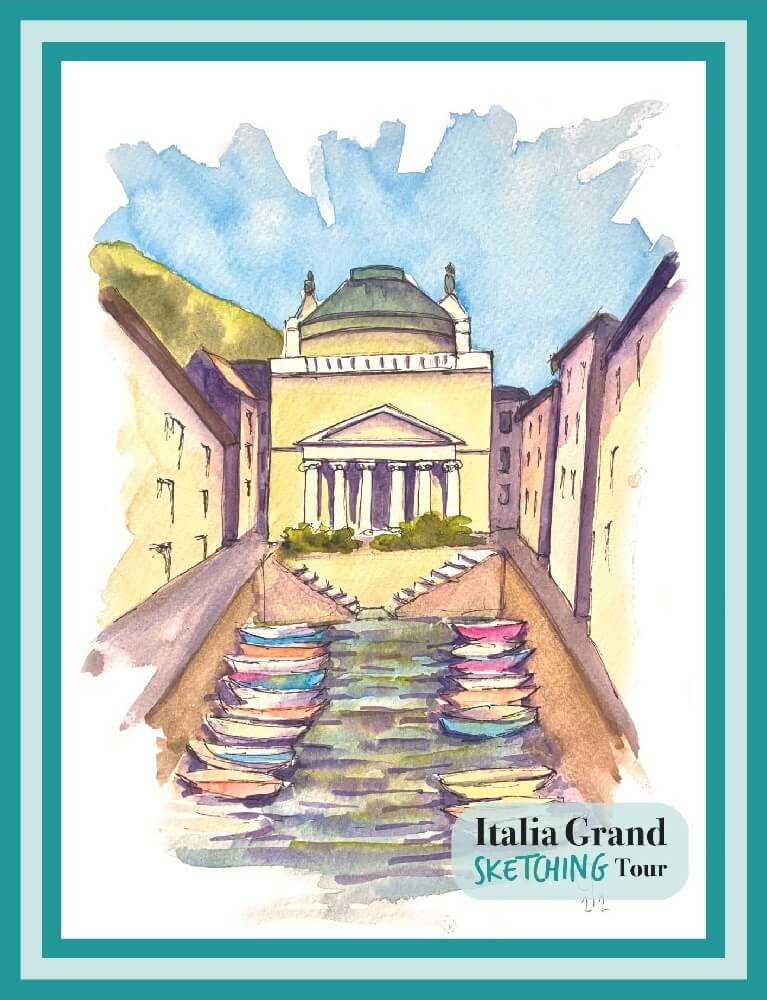
In my opinion, Borgo Teresiano is characterized by the neoclassical style and the Church of Sant’Antonio is certainly its reference point. Until the mid-18th Century, the private chapel of Antonio Rossetti stood in this area. It was initially opened to the public but it became too small and a Baroque church was built. The population continued to grow and therefore, in 1808 a competition was announced and the neoclassical project of the Swiss architect Pietro Nobile won.
The church was consecrated in 1849 to Sant’Antonio Taumaturgo. It is commonly referred to as Sant’Antonio Nuovo, to distinguish it from the other church dedicated to the saint which stands in the historical Cavana area.
One of the particularities of the church is that it stands on the edge of the Grand Canal, the canal where the merchant sailing ships arrived during the past centuries. This is why I chose to represent it overlooking all those small boats that are moored along the canal and which make this glimpse so fascinating.
7. Trieste City Hall
The heart of Trieste is undoubtedly Piazza Unità d’Italia, a wonderful square that rises right on the sea. A square characterized by its breadth and by the brilliant white of its buildings. The Town Hall, which stands on the side parallel to the sea, was built by the Trieste architect Giuseppe Bruni in an eclectic style between 1873 and 1875. In front of the building stands the Fountain of the Four Continents which gives the square a touch of lightness thanks to the flying angel on the top.
This building is also a subject that I love to represent in my paintings, perhaps because every time I discover new details and new symmetries. In fact, this is the only monument in Trieste that I have included in the first volume of the Italia Grand Sketching Tour, the book that recounts my motorcycle journey to discover Italy.
8. Villa Revoltella
Another perfect place to relax while visiting Trieste is the Parco di Villa Revoltella. It is a historic garden of 50,000 square meters that surrounds the chalet that was the hunting lodge of Baron Revoltella. The Baron, an entrepreneur and financier of Venetian origin, lived and developed his businesses in Trieste, a city that he loved and to which he bequeathed most of his assets.
Inside the park stands the Church of S. Pasquale Baylon and Sant’Eufemia, an extremely fascinating small church that remains in my heart as my parents got married here. It is a neo-Romanesque church with a Greek cross plan. It was built in 1863-1866 by an architect from Prague at the behest of the Baron who wanted to be buried here. In fact, the church rises above a crypt where Baron Pasquale Revoltella and his mother are buried.
9. Giuseppe Verdi Theater
Another characteristic of Trieste is the love of culture, music and theatre that permeates the city. There are numerous theater halls and the most important is undoubtedly the Teatro Lirico Giuseppe Verdi which stands in the homonymous square alongside Piazza Unità d’Italia. It was built by private initiative at the end of the 1700s. The main facade recalls “La Scala” in Milan as the architect Matteo Pertsch, who took care of the facades, was a pupil of architect Giuseppe Piermarini. The original project and the interiors were by Giannantonio Selva, also designer of “La Fenice” in Venice. The dedication to the composer Giuseppe Verdi dates back to the 27, 1901. At the announcement of the maestro’s death the city council convened during the night to rule the change of dedication of the theater.
10. The Victory Lighthouse
The main event that takes place in Trieste is the annual sailing regatta called Barcolana and takes place on the third Sunday of October and attracts thousands of boats to the city. Professionals and non-professionals compete for the prize sailing in the Gulf of Trieste. One of the best places to admire this spectacle is Strada del Friuli, where the lighthouse by the architect Arduino Berlam stands.
The Victory Lighthouse, completed in 1927, is also a memorial in honor of those killed at sea during the First World War. Periodically it is possible to go up to the circular balcony to enjoy one of the most spectacular views of the city. Unlike other views, I had to represent this monument from photos as it is impossible to see the upper part at its foot and must therefore be observed from afar from an almost aerial point of view.
11. San Giusto Cathedral
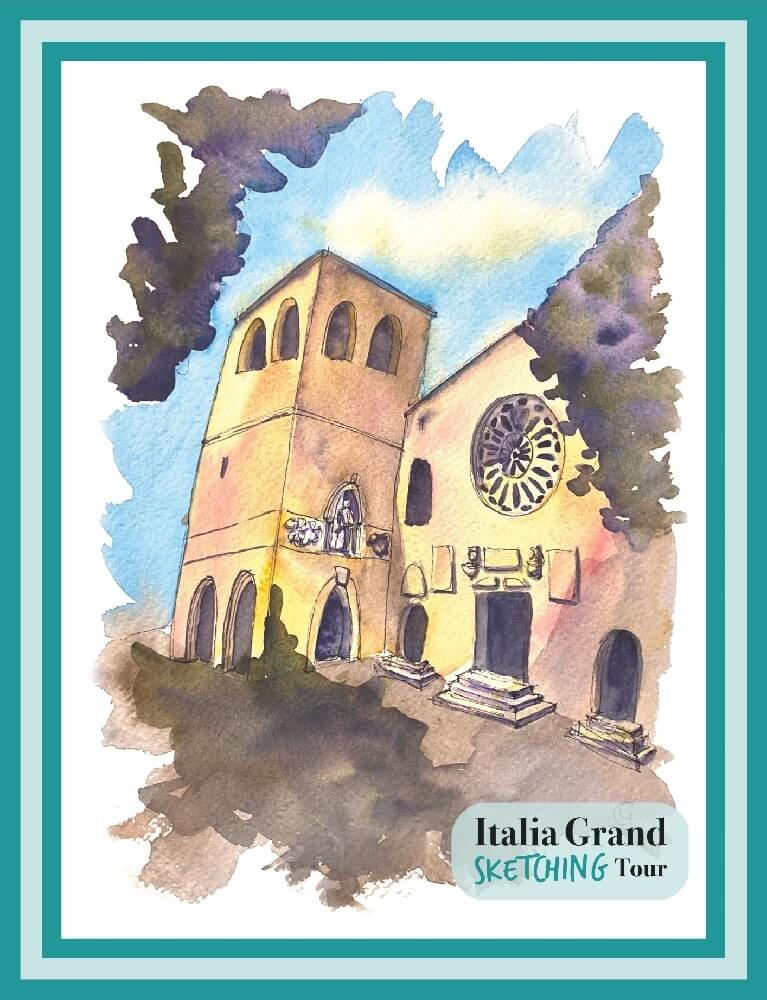
The Cathedral and the Castle of San Giusto are located on the top of the hill that represents the oldest historical nucleus of the city and you can’t miss it in a visit of Trieste. The city was founded by the Romans as a colony on the edge of the first empire. The Cathedral is dedicated to the martyr Giusto (Justus), killed for his faith by the Romans and now patron saint of the city who celebrates him on November 3rd.
The basilica owes its asymmetrical appearance to the unification in the early 14th Century of the two pre-existing churches of Santa Maria and San Giusto. They were incorporated under the same roof to create for the growing city a cathedral of adequate size. The austere facade is enriched by the rose window in Karst stone . The church is a complicated subject to paint because of its austerity but also for the difficult perspective. In fact there is no observation point far enough from which to capture the grandeur of the facade and its bell tower. This is why I had to use a fish eye perfective to fit in the paper the whole complex.
12. Via Ciamician
Trieste is undoubtedly characterized by the sea. Wandering through the narrow uphill streets of the ancient city you can find several magnificent views that are a joy for the eyes and, in my case, for the brushes of the artist. Via Ciamician is not important from a historical point of view but a walk in this area of the city can reserve some surprises for those who approach the visit with a curious heart.
Perhaps bringing to mind the verses of the Trieste poet Umberto Saba in which he tells us about his wandering around the city that possesses a grumpy grace, which is certainly one of the strengths (but also weaknesses) of this wonderful city .
In conclusion: for you all the illustrations of Trieste
We have reached the end of this tour of the 12 places to visit in Trieste, but my watercolor exploration is not over and I will have the pleasure of telling you my discoveries if you decide to join the Italia Grand Sketching Club by registering in the form underneath.
And if you liked this visit of Trieste and you want to see the complete collection of paintings of these twelve places you can request your PDF copy of the 2023 calendar here below for free.
The form you have selected does not exist.
